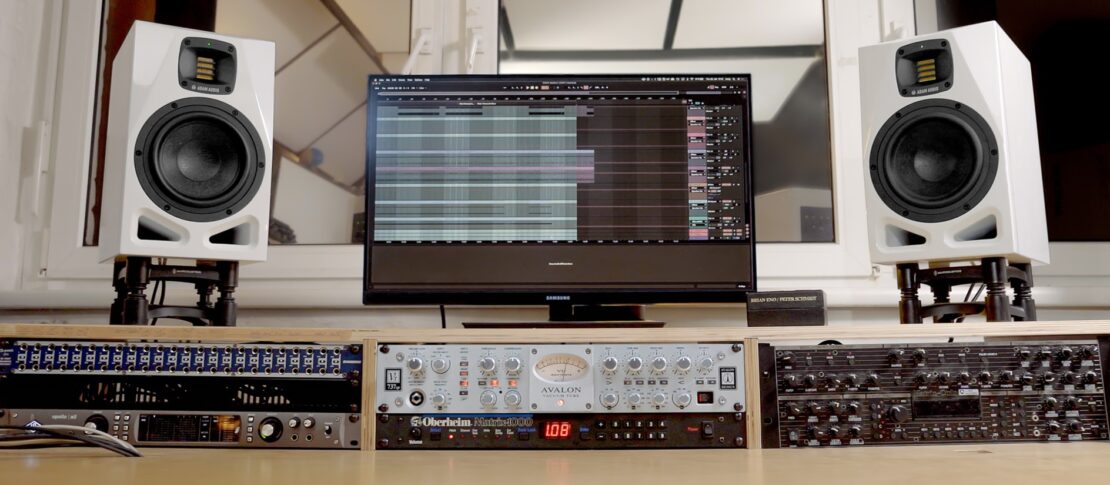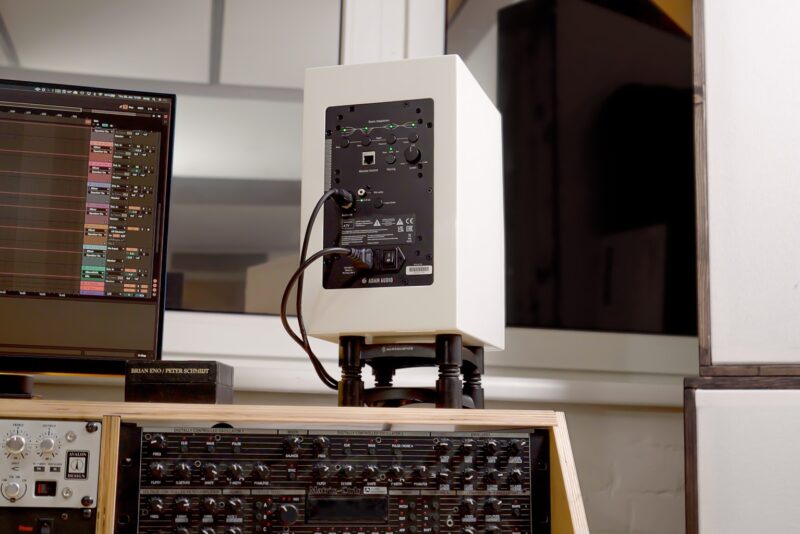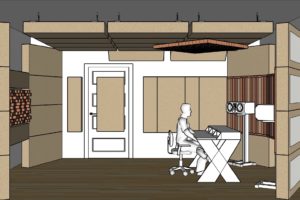
Room Adaption Unpacked [Part 2]
In Room Adaption Unpacked [Part 1] we described the principles and implementation of room adaption technologies and we finished Part 1 with a promise to describe some of the potential pitfalls of room compensation in Part 2. So here is that promise fulfilled.
Compensation Limits
The first pitfall is that room compensation has its limits, and it’s worth appreciating that there are some things it can’t do. Imagine, for example, a monitor located on a stand with a wall not far (say 1 m or 3 ft) behind. Actually, you may not need to imagine that scenario at all because there’s a reasonable chance it reflects your studio. Acoustic energy radiates forwards from the monitor towards the listening position but at low frequencies it also radiates backwards. That rear radiated energy will reflect from the wall and, because of the time taken travelling the extra distance to the listening position, will at a particular frequency arrive 180 degrees out of phase with the forward radiated energy. The two signals will cancel each other and a sharp dip in the listening position frequency response will result (1 m / 3 ft leads to a dip at 86 Hz).
Now, you might imagine that room compensation will identify and fill the dip in the frequency response, but it can’t because however much gain the compensation might add at the dip frequency, the phase cancellation will always occur. So, room compensation generally can’t correct localised dips in the frequency response that are the result of phase cancellation. Most room compensation software will display a predicted post compensation frequency response curve and if any phase dips are present, they ought to be apparent in that curve. And if post-compensation phase cancellation dips are severe, you can perhaps take it as a prompt to consider modifying your monitor positioning.
Mind Your Headroom
A second potential pitfall of room compensation is that it can result in monitors running out of headroom. This is because adding gain to overcome dips in the frequency response, or even to extend a monitor’s low frequency bandwidth, as some room compensation systems enable, demands significant amplifier power and monitor power handling. 3 dB of gain, for example, might sound modest but it requires twice the amplifier power. If room compensation has added 3 dB of gain anywhere in the audio band, the amplifier and monitor headroom has by definition been halved. So keep an eye on room compensation gain and don’t let it get out of hand.
Furthermore, avoid using high Q filters (>10) because the audio will sound “processed” as the filter’s ringer will start to become audible. Following these guidelines will result in some frequency response features remaining uncorrected but in this case, less is more.
Listening In The Room
Another potential pitfall that can arise with room compensation is its effect on the sound at alternative listening positions. If you’re the kind of person who likes to get up and move around a little while listening, you might find that a consequence of a monitoring frequency response that’s been massaged to be flat at the primary listening position is less neutral sound elsewhere in the room.
This will probably be more noticeable the further from the monitors you listen because the changes made to the monitor’s inherent frequency response by the compensation EQ are likely to become more apparent in the reverberant field of the room where the sound is dominated by reflected acoustic energy. Sonarworks SoundID Reference actually enables compensation to be dialled-back and be less aggressive, and this can help with any reverberant field issues. So if your needs are for more general room compensation, rather than for it to be highly localised, this option is worth investigating.

Stereo Check
Finally, room compensation technology necessarily analyses monitors individually, so it will likely apply different EQ parameters to each one or a stereo pair. And if the EQ applied to each monitor is markedly different, because for example they are located in particularly contrasting acoustic spaces, the stereo image focus they create can be affected. So if you find that room compensation results in significantly different EQ parameters for your left and right monitors, it might be worth revisiting their positioning in the room so that the compensation applied to each is more similar. Any stereo focus issues should then be fixed.
No Magic Wand
So, room compensation is not a magic wand and it pays to appreciate that when using it. But it also pays to give room compensation an easy time as possible by ensuring your room is, as far as possible, a benign acoustic space. The less work room compensation is required to do, the better will be its results. In fact, you’re much less likely to stumble across any of the potential pitfalls we’ve described if your room is reasonably well behaved in the first place through appropriate monitor positioning and perhaps some modest acoustic treatment.
Room compensation is not an excuse for overlooking good monitor positioning and room acoustics, and not only are there numerous online resources available to guide you on the subject, we’ve published a couple of relevant blog posts too:
So, before you launch Sonarwork SoundID Reference, or any other room compensation technology, see what can be done to improve your room acoustics and monitor positioning.
Despite the last few paragraphs of potential pitfalls, room compensation, as we described in Part 1, is one of the most significant recent advances in monitoring technology. But as perhaps is always the case with advanced technologies, it pays to understand how they work, because only then are you likely to benefit from their full potential.
![Room Adaption Unpacked [Part 1]](https://www.adam-audio.com/blog/wp-content/uploads/resized/2024/12/adam-audio-blog-learn-room-adaption-pt-1-thumbnail-300x200-c-default.jpg)
